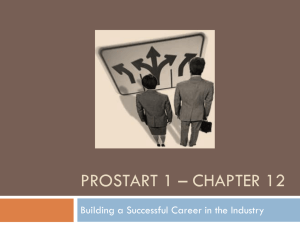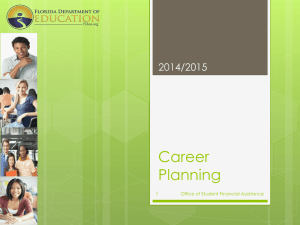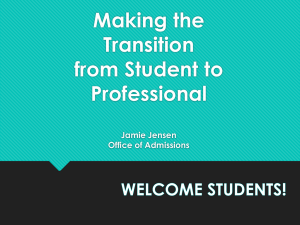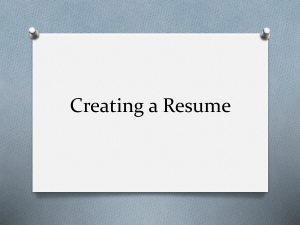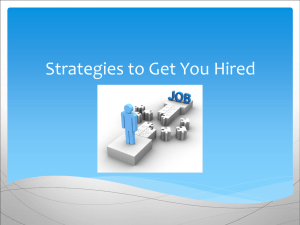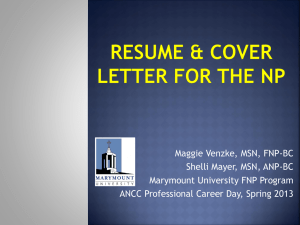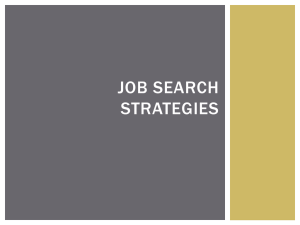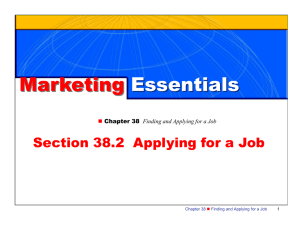Resume & Interview Tips
advertisement
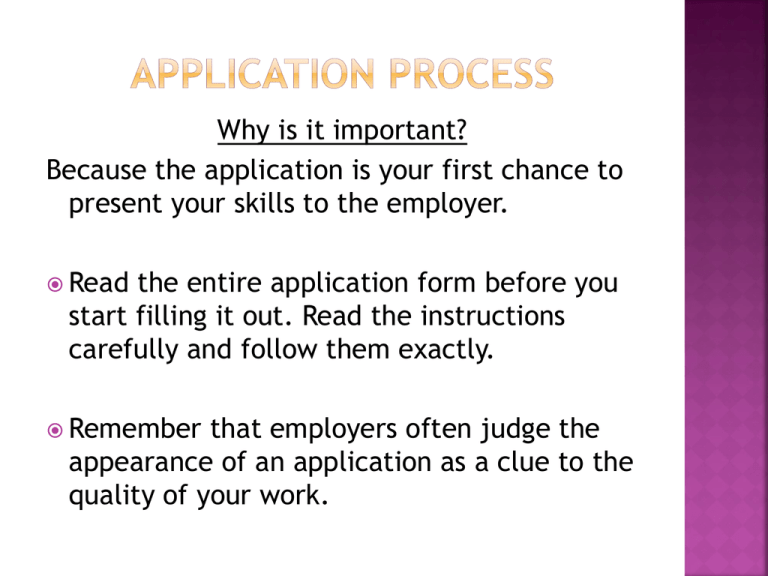
Why is it important? Because the application is your first chance to present your skills to the employer. Read the entire application form before you start filling it out. Read the instructions carefully and follow them exactly. Remember that employers often judge the appearance of an application as a clue to the quality of your work. General Tips: Be honest in your answers. Have all the information on hand that you might need to fill out an application, such as a personal data sheet and resume… we’ll get to those Fill out the form neatly and accurately. Apply for a specific position, rather than entering "anything" or "open" for the desired position. Leave no blanks. Write "Does Not Apply" (or "N/A" for Not Applicable) in the space if the question does not apply to you. Explain lengthy gaps in your work history, for example, "attending school." Read and check the application for completeness before turning it in to the employer. Tips for applying in person: Greet the receptionist politely when requesting or submitting an application. The receptionist's first impressions are often passed along. Use blue or black ink pens. Bring your own pen (or complete app. ahead of time) Print clearly and legibly. Be sure to sign and date the application. Mail or turn the application into the correct person or place. However, today most companies are asking applicants to apply online. Tips for applying online: Have your resume available in electronic form to attach or paste into the appropriate fields. Choose a time when you can complete the process from beginning to end (can take up to one hour). Be prepared for system crash- save answers as you go ICE so you don’t have to start over. Proofread- mistakes and typos are not any more acceptable online than they are on paper. (1) Personal Data Sheets: PDS are useful tools that help you fill out an application. You do NOT turn this in to the employer. Keep your fact sheet up to date for future job searches. Items on PDS include: Employment history including company names, addresses, telephone numbers, and dates of employment Volunteer work history with community organizations including organization names, addresses, telephone numbers, and dates of service Personal references including names, addresses, and telephone numbers (see example PDS) (2) Resumes…. What is a resume? A brief written account of background, work experience, and professional qualifications (that use SPECIFIC examples). The objective of your resume is to get you an interview, and the interview will get you the job (hopefully)! Sample Resume Typically submitted to employer with the application. Historically, resumes were printed professionally on nice stock paper. However, today most employers are wanting electronic versions (like Microsoft Word and PDF). Dos and Don'ts No errors! Use spell-check, proofread, AND have others look over it. Use perfect punctuation, grammar, and spelling to demonstrate you are able to communicate effectively. Be concise. Employers typically scan resumes quickly. Save the detail for your interview. Items to include: Contact information Objective statement Education Work (or Professional) experience Special skills -see blank resume template An important thing to remember when you are first assembling your resume is to be specific when it comes to your experience and qualifications. Examples: Food server (becomes) Provided friendly and efficient customer service by accurately taking food orders and delivering in timely manner. Grant writer (becomes) Procured over $22,000.00 in federal and state funds by writing 3 grants in a 15 month period. In a sea of resumes, how do you make your stand out? 1) Tailor the resume to the position- You would be surprised how many people send out a “one size fits all” resume. 2) Make it you- ask yourself, “does this document convey what I want it to convey about me?” 3) Ask for constructive criticism- a fresh pair of eyes can do your resume a world of good …which brings up our next point Prepare and Practice Prepare: your answers to typical interview questions Practice: saying your responses out loud. Using a friend or family member can help See Sample Interview Questions hand out Be on time (and by this, we mean 5-10 min. early) Make eye contact Firm hand shake Stay calm Speak audibly and clearly Practice good posture and be conscious of your body language Know and avoid your nervous habits (EX: Do you constantly pull at your neck collar? Do you say “like” or “umm” a lot?) http://www.howcast.com/videos/2055-How-To-Ace-a-JobInterview Follow Up Always follow up with “thank you” note to show your continued interest in the position. If you interviewed with more than one person, send note to each interviewer. Interviewers tend to prefer old fashioned, hand written notes. So, no “thank you” emails!
